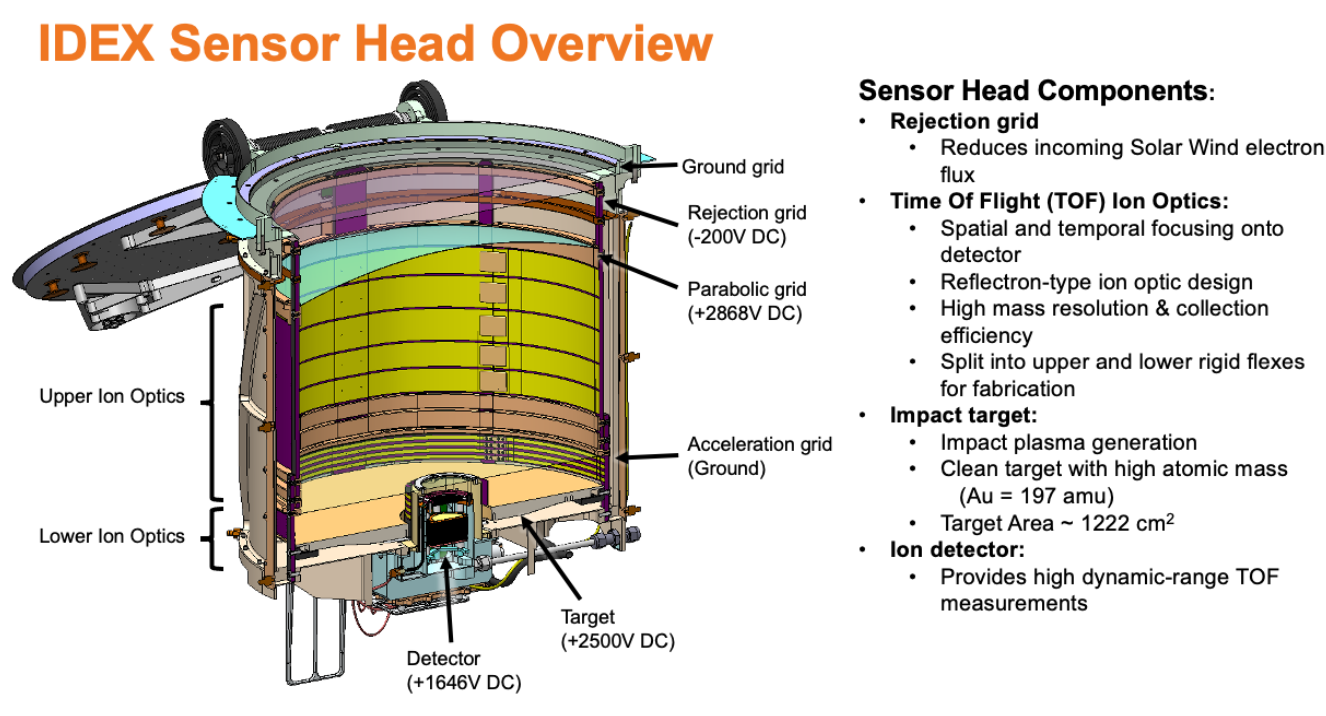

The Interstellar Dust Experiment (IDEX) is a high-resolution dust analyzer that provides the elemental composition and mass distributions of ISD and IDP particles. IDEX links the interstellar gas phase composition, as obtained with IMAP-Lo and through PUIs with CoDICE and SWAPI, with the makeup of ISD and IDP particles.
IDEX is based on the heritage of past flight and laboratory instruments. Its operation principle is based on the impact ionization process.
IDEX has two components, an electronics enclosure and a sensor head with a large effective target area (600 cm2). The IDEX mechanical design consists of a simple Al shell structure that provides support for the biased electrodes of the TOF ion mass analyzer and the grids over its aperture. The centrally-located ion detector and the front-end charge sensitive amplifier (CSA) are integrated into the bottom of the instrument.
Individual dust particles entering the instrument pass through a set of grid electrodes and impact the target. The target is biased at +3 kV to provide positive ion acceleration, and the reflectron-type ion optics are used to generate TOF compositional mass spectra.
The impact-generated negative charges are collected on the target. An electrostatic field, shaped by a set of biased rings and a curved grid electrode, provides spatial and temporal focusing of the accelerated ions onto the central detector.
Maintenance of target cleanliness is of high importance throughout the fabrication, integration and operation of IDEX. The primary concern is the condensation of volatiles on the target. To mitigate this risk, IDEX has a one-time deployable door and its in-flight operation allows for the regular (once per months) use of heaters to raise the target temperature to 120 C and release any possible condensible contaminants.
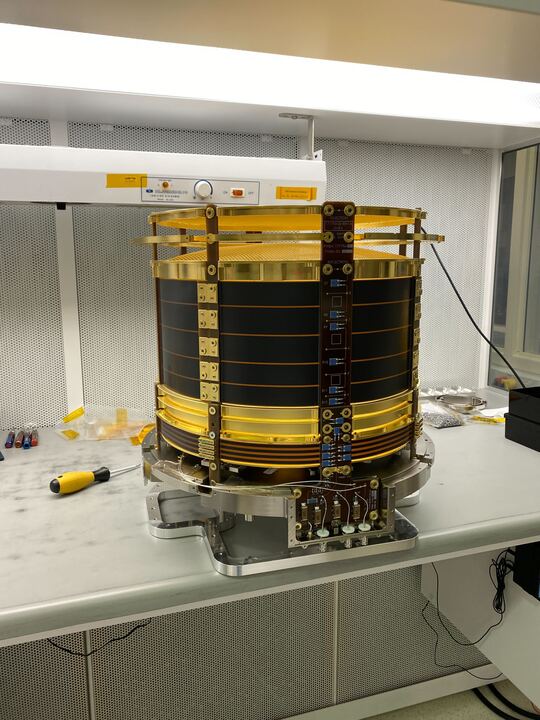
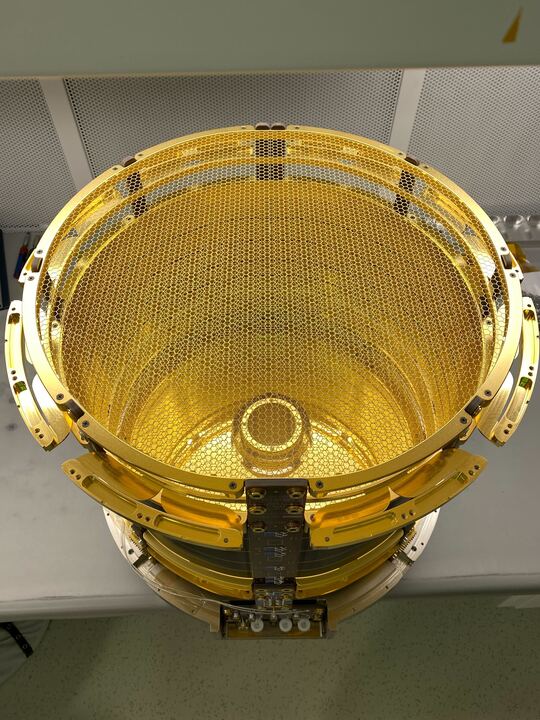
IDEX has two components, an electronics enclosure and a sensor head with a large effective target area (700 cm2) to collect a statistically significant number of dust impacts (> 100/year), based on Ulysses-derived fluxes (Landgraf et al. 2003). The IDEX low-mass mechanical design consists of a simple Al shell structure that provides support for the biased electrodes of the TOF ion mass analyzer and the grids over its aperture. The centrally-located ion detector and the front-end CSA are integrated into the bottom of the instrument.
A mass spectrum is obtained for each particle measured from the TOF analysis of the impact generated atomic and molecular ions (Srama et al. 2004; Sternovsky et al. 2007). Individual dust particles entering the instrument pass through a set of grid electrodes and impact the target (Fig. 22). The target is biased at +3 kV to provide positive ion acceleration and reflectron-type ion optics are used to generate TOF compositional mass spectra. An electrostatic field, shaped by a set of biased rings and a curved grid electrode, provides spatial and temporal focusing of the accelerated ions onto the central detector. IDEX's wide mass range of 1-500 amu is designed to identify the elemental makeup of impacting particles with selected mineralogical information. Organic molecules can be identified as well, if present.
Figure 22 also shows a mass spectrum from a prototype instrument and analog mineralogical dust particles obtained at a dust accelerator. The large ISD speeds increase the impact charge, that combined with IDEX geometry, provide a higher sensitivity than previous instruments, and an accurate dust mass estimate (m/Δm > 2) (Horanyi et al. 2014).
IDEX also enables excellent ion mass resolution (m/Δm > 200). The impact velocity of ISD particles is determined from orbital mechanics, combining IMAP motion around the Sun with ISD inflow. IDEX will be tested and calibrated at the dust accelerator of the University of Colorado (Shu et al. 2012). The interpretation of the measured ISD impact spectra is supported by continued laboratory calibration measurements using analog dust sample materials (Altobelli et al. 2016; Fiege et al. 2014; Hillier et al. 2012, 2018).
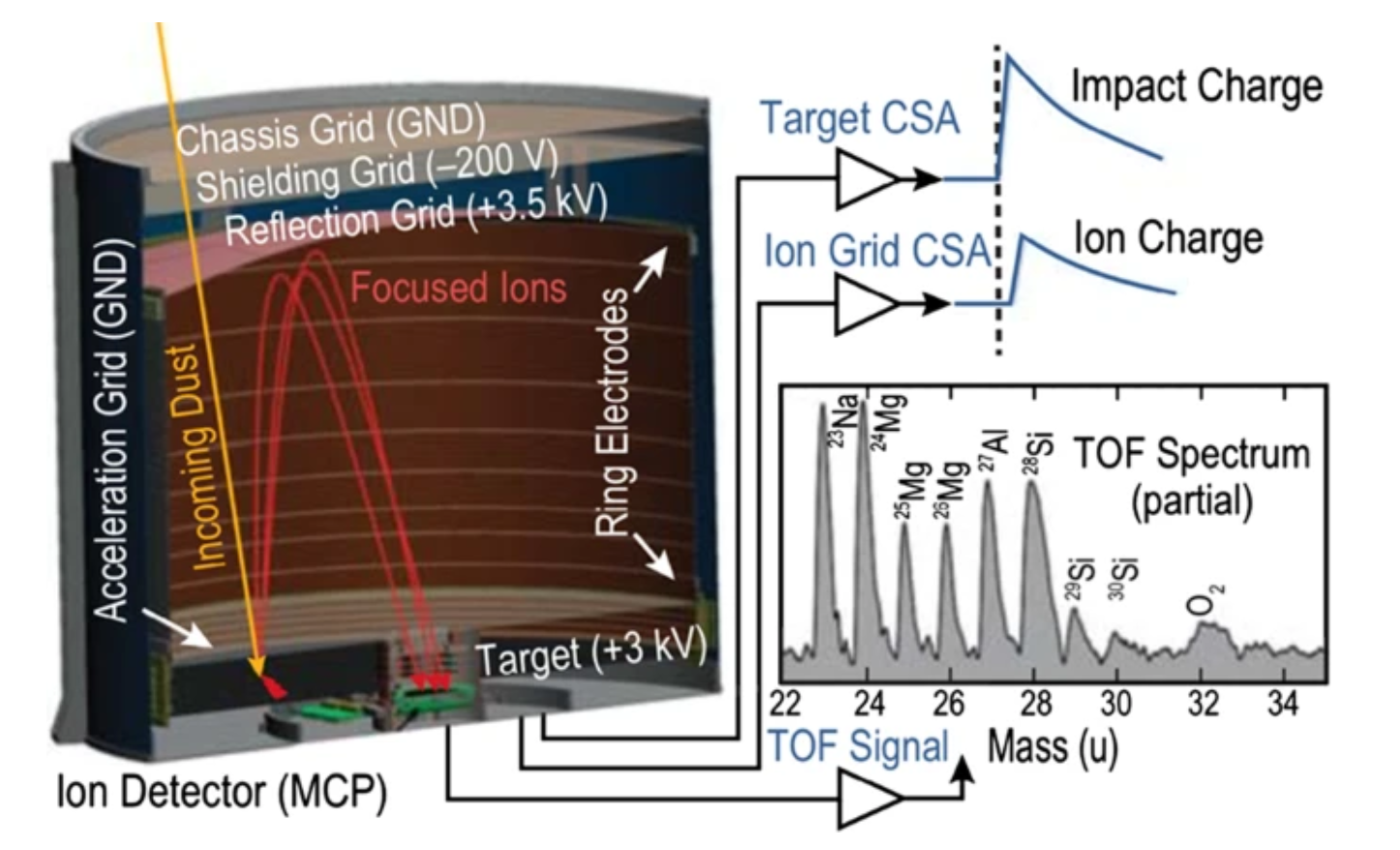
The estimates for the expected IDEX instrument science data volume are derived from simulations of known IDP and ISD populations. Figure 5.2 depicts counts for ISD (red/blue) and IDP (black) particles expected to be measured by IDEX during the mission.
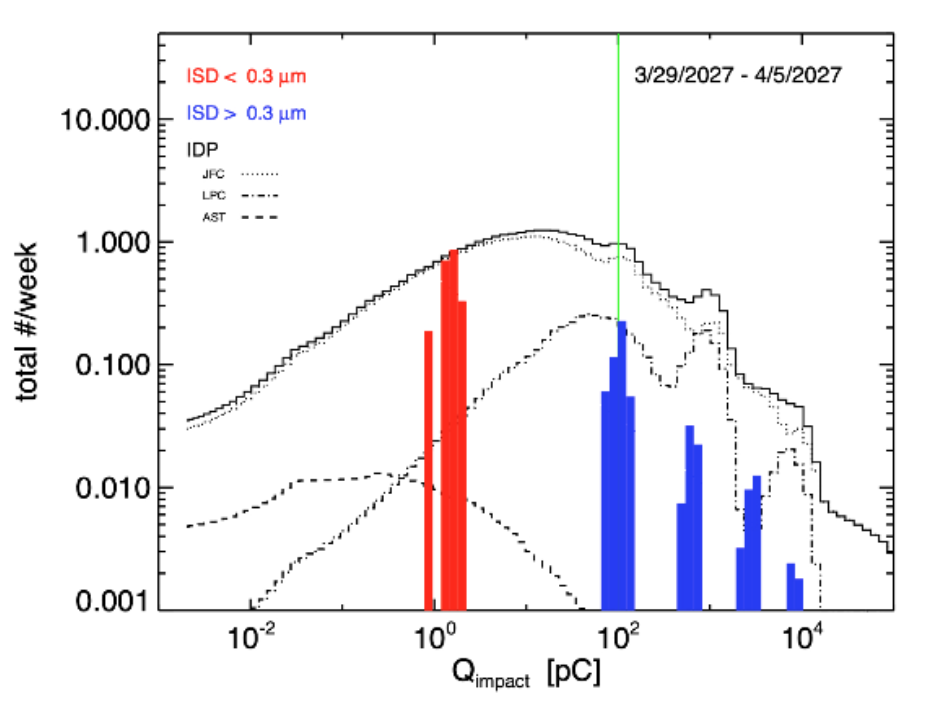
From this simulation, IDEX is expected to measure 16 events per day on average. Using these estimates in conjunction with the bitmap in Figure 4.7, we can estimate the weekly data volume expectancy for IDEX during the mission. This has been carried out for each of the science data product levels, as depicted in table 5.1.

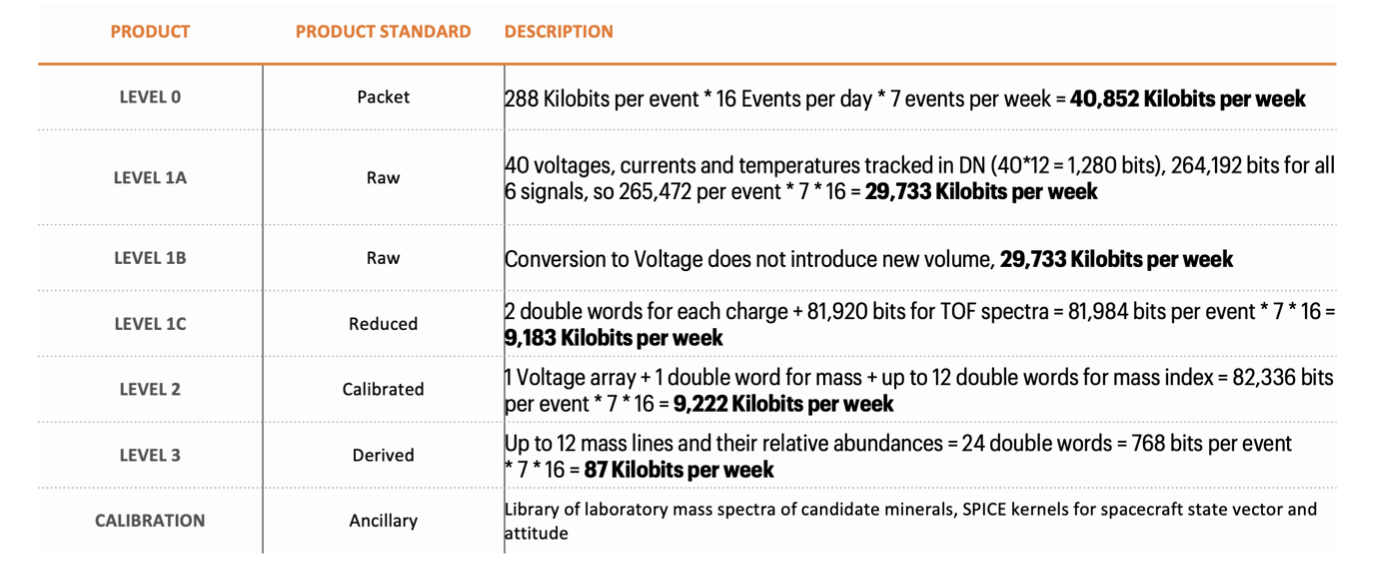
An overview of the sensor head is shown in Figure 3.2.
